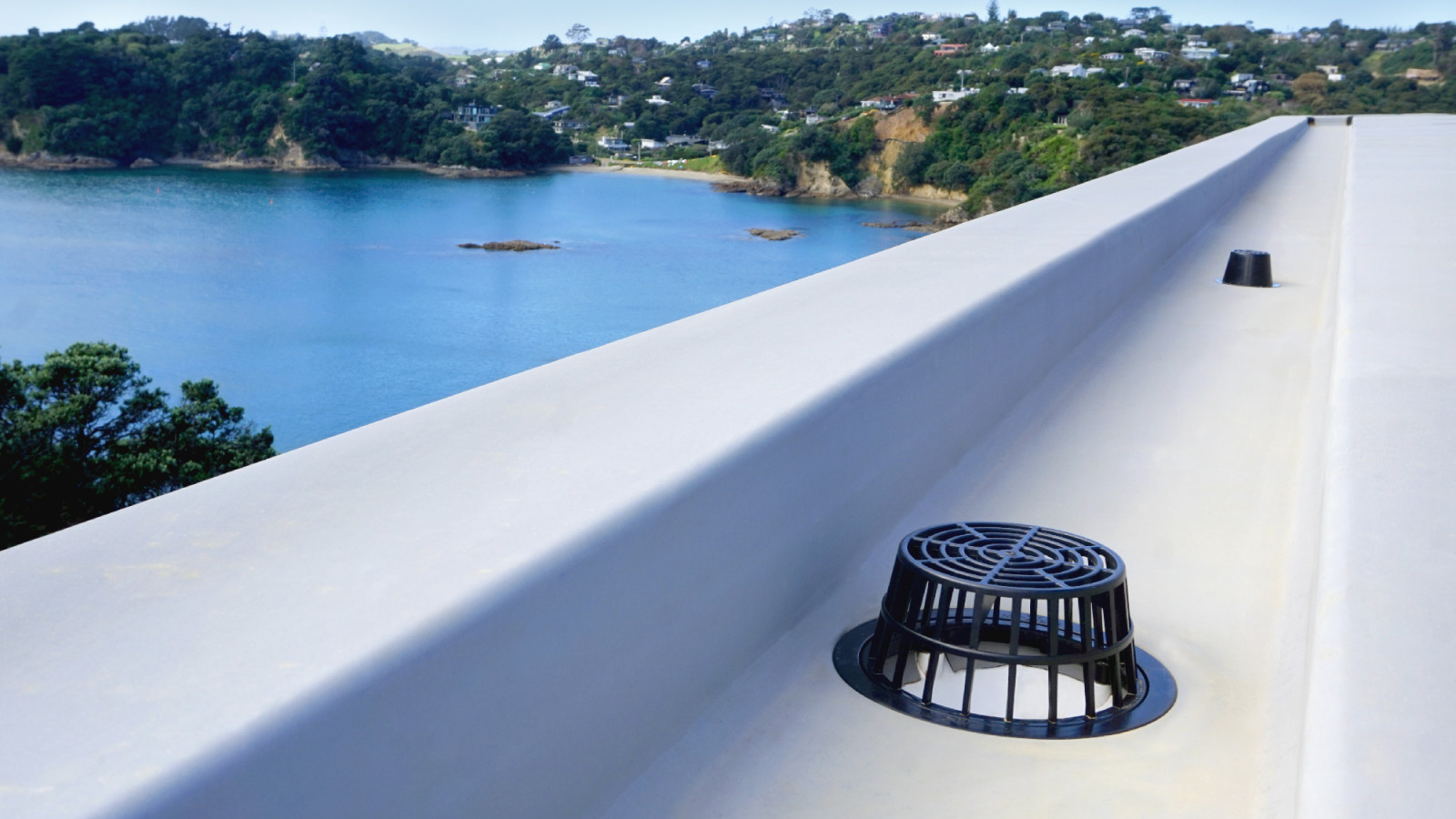The purpose of a membrane is to protect the area beneath from ingress of moisture. It provides an impermeable barrier to the elements be it on a deck, a roof or a carpark.
During the 80’s the sheet membrane was just dressed into a vertical PVC pipe which inevitably ended up in water tracking under the membrane edge and weeping into the area below, membraned decks were renowned for this. In the start out days of Allproof, Ian Jackson, the company founder and an installer himself, found that in Australia they were using a flange to terminate the membrane onto. He started importing these flanges into the New Zealand market and the rest is history as far as the company is concerned.
When detailing a membraned area, the selection of the outlet is of prime importance. Is the membrane an adhesive based product? Or is it multi-layer heat applied? Allproof bases are available in thin wall PVC, thick wall PVC and Bronze. The first to suit adhesive type membranes and the latter suited to both adhesive and heat applied systems.
The bases have options of vertical and 90 degree outlets that can help when the invert for the outlet pipe is tight due to available cavity space. The PVC bases use a glue fit connection to DWV for a permanent waterproof system.
Flat, domed and overflow grates and risers will allow the installation to receive water for its particular application.
A flat grate will allow for filter media to be laid directly over the outlet in a planter box situation, or where there are minimum clearances, such as a floating deck. A domed outlet is the most common selection as the dome grate will have a higher resistance to blocking from items such as airborne rubbish or large plant leaves. The addition of an overflow ring provides a 50mm riser to the base that will serve as a secondary outlet should the primary one block.
Overflows must be of a capacity no less than the primary outlets and discharge to atmosphere providing early, conspicuous warning that maintenance is required (E1/AS1 chapter 5.5.) They also must be positioned in such a way that the top of the overflow outlet is situated 50mm below the top of the membrane gutter. Allproof has further developed their overflow assembly to have a built in cowl cover to prevent ambient water from rain or washing down entering the overflow and causing a drip through to the lower level.
As with all products, installation is crucial to the effectiveness of the system. Once the correct product has been selected, the contractor will set the outlet base to be flush with the low point of the gutter. For timber situations the flange of the base will be set into a routered out rebate, in concrete the slab will often be cored out and then the base bedded into a mortar bed. Fixing holes are provided to fully secure the base into position mechanically. This part of the install will provide a nice flush entry for the membrane to be dressed into the base without a step making a dam for the water providing a smooth path to the outlet
The applicator will then apply the membrane to the suppliers’ recommendations. They will pay particular attention to the dressing of the membrane into the flange, ensuring the membrane is smooth and well adhered to the base. If a heat applied membrane is installed it is crucial that the clamp ring is installed while the membrane is still mailable so the ring can mould the membrane to ensure a uniform fit. If the membrane is left to harden then the clamp ring may not have a full, even connection creating the possibility of leakage occurring between membrane and clamp ring. This is sometimes highlighted in an overflow where the outlet will weep prematurely.
Once installation is finished all outlets should be flood tested and washed to confirm that the seal between clamp and membrane is tight. The overflow outlet can be finished off with the installation of the Allproof Soffit Overflow Cover to cover the PVC pipe as it exits the soffit above, even powdercoated to match the rest of the building.




























 Most Popular
Most Popular Popular Products
Popular Products


